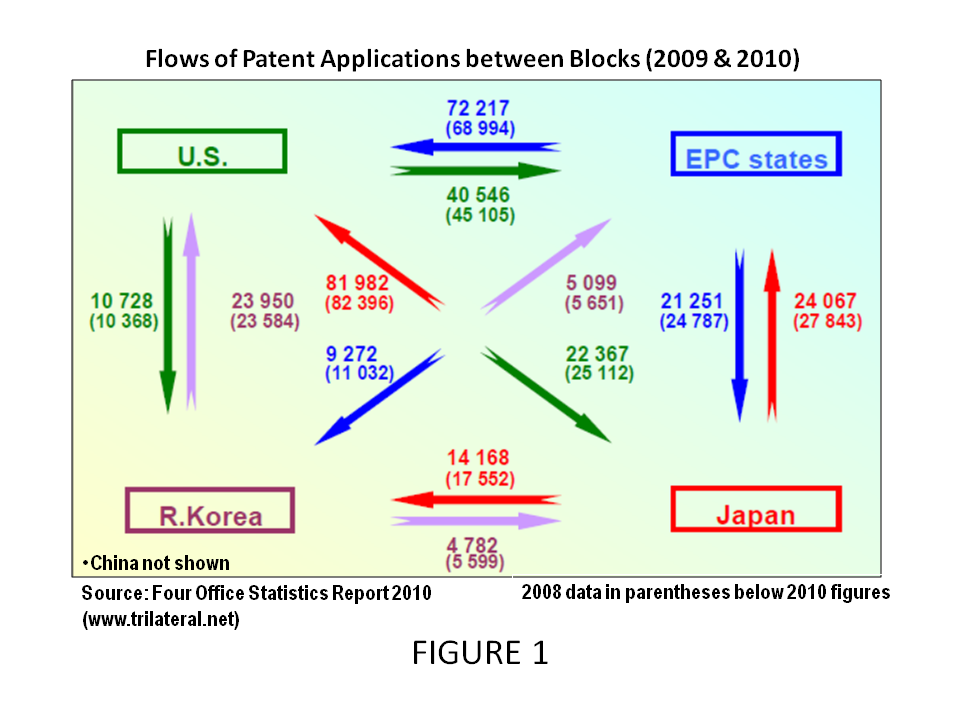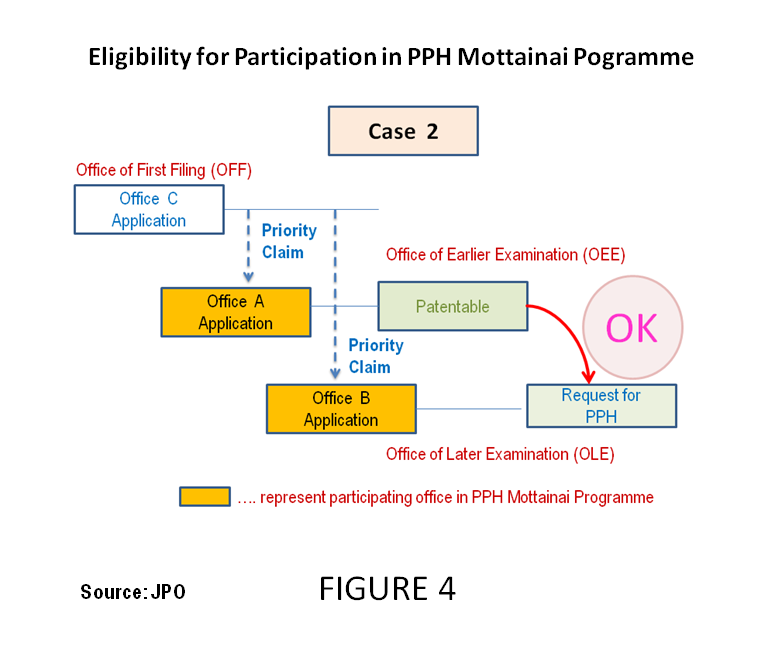Patent Prosecution Highway
Dr. Rajendra Prasad20 February 2012
Introduction
With growing demand for patents manifested by the ever increasing globalization of world economy, there has been
increasing pressures of harmonization of patent regimes through multi-lateral cooperation under TRIPS/WTO.
Simultaneously, there have been quite a few notable changes with regard to patent prosecution processes e.g.,
pre-grant and post-grant opposition proceedings, publications of patent applications and granted patents in freely
accessible patent databases and some newer ways of dealing with examination processes of patent applications.
Patent Prosecution Highway (PPH) is one of these newer mechanisms that have been adopted by some Patent Offices during
the last decade, initially on trial basis and now increasingly on permanent basis. PPH is an agreement between two Patent
Offices as a bilateral arrangement aimed at reducing the pendency period of patent prosecution and consequently the cost
reduction of patenting in cases where the patent is desired to be secured in both the countries covered by such an arrangement.
Purpose and Modalities of PPH
The purpose of the PPH, as stated above, is to speed up the processing of patent applications filed
in more than one country. Normally, when an applicant files patent applications for the same invention in more than one
country either under the 'Paris Convention' or under the 'Patent Cooperation Treaty', the concerned patent offices will
conduct searches and examine the patent applications independently without any regard to where else the application is
filed and / or being considered.
In the PPH scheme, faster processing is achieved by the exchange and mutual use of work results between the two cooperating offices.
This scheme is believed to enhance the efficiency of the patent examining process of one Patent Office by relying on examination
work already done by the other cooperating office on a patent application without compromising on the quality of examination.
As per the original provisions of PPH when it was launched between the USPTO and JPO, when claims were determined to be
allowable in the Office of First Filing (OFF), a corresponding application with corresponding claims filed in the Office of
Second Filing (OSF) could be fast-tracked for examination. Accordingly, the OSF could utilize the search and examination
results of the OFF thereby avoiding duplication of work and expediting the examination process in the OSF.
However, the process of acquiring benefit of prior examination is not automatic but can be taken up on the
request of the applicant. During the pilot stage, there were several restrictive conditions and only applicants
fulfilling those conditions were able to take advantage of fast-tracking the examination of their patent applications.
The positive experience, however, gained from the initial pilot programmes not only led to expanding the network
of PPH programmes with inclusion of newer participating patent offices but the nature and scope of the PPH programmes
have also since changed considerably with lot more flexibility in the hands of beneficiary patent applicants.
Cross-national patent applications
With growing internationalization of businesses, there is an increasing tendency of filing patents
in foreign markets beyond the country of origin resulting into large number of patent families. With this, an enormous
unavoidable duplication of work is also growing across the Patent Offices, if the examination of all the concerned
offices proceeds from the scratch and no cognition is taken of the previous office actions elsewhere. The enormity
of superfluous work can be gauged from the recent (2009 and 2010) data on flow of multiple patent applications between
four Patent Offices of US, Europe Japan and Korea (China omitted) as shown in Fig 1.

It was the objective of the pilot programmes of PPH when launched to explore to what extent the
search / examination results can be mutually used even though none of the partner offices are bound by the decisions
of the respective other authority; the examination at either of the partner offices continue to be governed by their
respective patent laws and rules. Many PPH started as pilot programmes have since already been turned into permanent
arrangements suggesting the utility of these mechanisms.
Growing Networks of PPH Programmes
Since 2003, JPO and USPTO began exploring ways and means of exploiting the possible use of each other's
search results. This led to a pilot programme of PPH agreement between them initially for twelve months from July 3, 2006 to
July 3, 2007 which was further extended to last a total of eighteen months ending on January 3, 2008. The programme was
made permanent thereafter following a positive review from both sides.
Soon after the beginning the PPH pilot with JPO, USPTO launched a number of other similar programmes with its other
allies to expand its network of PPH pilots even after the PPH with JPO was made permanent. Some of these further
initiatives with their starting dates and hyperlinks to their official notifications are shown below.
- JPO (Japan) [July 3, 2006]
- UKIPO (UK) [September 4, 2007]
- CIPO (Canada) [January 28, 2008]
- IPAU (Australia) [April 14, 2008]
- EPO (European) [September 29, 2008]
- DKPO (Denmark) [November 2008]
- IPOS (Singapore) [January 30, 2009]
- DPMA (Germany) [27 April, 2009]
- NBPR (Finland) [July 6, 2009]
- HIPO (Hungary) [July, 2010]
- ROSPATENT (Russia) [September 1, 2010]
- SPTO (Spain) [September 27, 2010]
- APO (Austria) [September 27, 2010]
- IMPI (Mexico) [February 25, 2011]
- PRV (Sweden) [May 25, 2011]
- ILPO (Israel) [June 20, 2011]
- TIPO(Taiwan) [August 22, 2011]
- NIPO (Norway) [October 25, 2011]
- IPO (Iceland) [November 30, 2011]
- SIPO (China) [December 1, 2011]
Despite reservations expressed by many critics on these arrangements with apprehensions
on the quality of patent examination to suffer due to dissimilar standards and skills of search on prior
art in different offices, USPTO is clearly encouraged to have these on permanent basis to the extent feasible.
An appreciable pendency reduction for US patent applications has been reported and seems to be one of the main reasons
for the aggressive approach of USPTO. The average number of patent office actions before disposal of a case has sharply
declined to 1.7 for PPH cases as against 2.7 for normal non-PPH cases. Further, an allowance rate of 93 percent was
observed for PPH cases as against only 44 percent for non-PPH cases. It has also been observed from the USPTO end,
that largest number of PPH requests come from applicants in the technology area directed to cellular and digital
communications. Thus PPH arrangements are more desirable for fast moving technology areas.
Many Patent Offices participating in PPH programmes with USPTO later launched similar pilot
programmes amongst themselves on the model of initial PPH pilot between USPTO and JPO paving the way for promotion
of international efforts to develop work sharing arrangements and reducing the cross-national duplication of
examining the patent applications. When the pilot programmes were launched, the applicants could request accelerated examination at the office
of second filing (OSF) if the patent application was previously filed at the partner office and at least one claim had
been determined to be allowable by that office. In this case, the work results of the respective offices would be exchanged
and mutually used. Under the then PPH plan (also referred to as 'basic PPH'), eligibility was limited to reuse of search
and examination results from a partner office on the first-filed (i.e., priority) application in a patent family under
'Paris Convention'. Later, PCT work product (written opinion, search, examination etc.) from several Patent Offices
designated as International Search Agencies (ISAs) were also allowed as a basis to enter PPH at the USPTO. It can be seen that the major shift in policy is moving from strictly 'OFF/OSF' basis to 'OEE/OLE' basis. This seems logical since
'first filing' does not always lead to first office action and quicker processing. An application having been prosecuted favourably once should
lead to faster disposal for subsequent applications. Various provisions as provided in the PPH from time to time also brought out
tendencies in patenting communities to consider the order of patenting in different countries. Many Patent Attorneys, for example,
began advising to their clients in US under the erstwhile PPH to first file outside US where the backlog is considerably less,
so that soon after the examination of their application and allowable claims, they could take advantage of PPH in US as 'Office of Second Filing'.
With the new provisions, it is now being suggested that it is advantageous to file first in a country like Australia where advantage of accelerated examination
is available, so that based on the results of 'Office of Earlier Examination (OEE)', advantage in US can be taken
under 'Mottainai PPH' as 'Office of Later Examination'. Any how, USPTO as also all other allies are now keen to see the number of
beneficiaries doubling very soon with the new provisions in Mottainai PPH .
With about two dozen countries and Patent Offices already under the fold of PPH by now, there is no doubt that the concept of
PPH is going to stay with us and prosper further. Most countries having begun their game on trial basis in the pilot programmes seem keen to
carry on the programme on permanent basis. While all the PPH programmes continue on bilateral basis as of now, it should not come as
a surprise, if PPH is adopted eventually as multi-lateral arrangement like PCT, to which all signatory Patent Offices are obliged to accept.
References
Proliferating PPH Network
For example, a pilot PPH agreement between UKIPO and the JPO was launched on 2 July 2007 with the agreement being
made permanent on 10 March 2010. Another pilot PPH agreement between UKIPO and the KIPO was launched on 5 October 2009.
Likewise, JPO and the KIPO commenced their PPH programme in April 2007; the same between JPO and Chinese SIPO commenced
as a pilot programme on 1 November 2011. UKIPO also launched similar pilot programmes with USA and Canada. A pilot PPH programme
between German DMPA and Chinese, SIPO commenced on 23 January 2012 for duration of two years, ending on 22 January 2014.
German, DMPA is also currently running similar pilot programmes with Canadian, CIPO, Korean, KIPO and Japanese, JPO.
As on date, there are as many as 23 Patent Offices and countries participating in one or the other PPH programmes.
A graphical representation of this PPH global network is shown in Figure 2.

How the PPH works
Since May 25, 2010, the fee for the petition to make special under the PPH programmes has been withdrawn by
USPTO. And since July 15, 2011 major revisions have been made to the eligibility criteria for requesting
participation in the PPH programme. In doing so, it has been sought to make PPH programme user
friendly and make it available to a greater number of applicants. Under the enhanced PPH framework,
participation may be requested on the basis of results available on any patent family member from any office
participating in this pilot, regardless of whether it was the office where the priority application was filed.
The new pilot which would last until July 14, 2012 incorporates several other improvements also to the basic PPH framework,
including a new definition of claim correspondence, which would hopefully make the system more flexible and user-friendly.
The new plan, known as 'PPH Mottainai Pilot Programme' has been launched between USPTO, JPO, UK-IPO, CIPO, IPAU, NBPR,
ROSPATENT and SPTO. Even with restrictive features in the erstwhile plans, the total number of requests for PPH has
already crossed 8,000 globally, the major beneficiaries of which were mostly cross-national applications between US and Japan.
It is, now with more user-friendly features, likely to be favoured more than previous versions by the patenting community.
The key provision of PPH Mottainai Programme is depicted graphically as Case 1 and Case 2 in Figure 3 and Figure 4 respectively.


Conclusion
